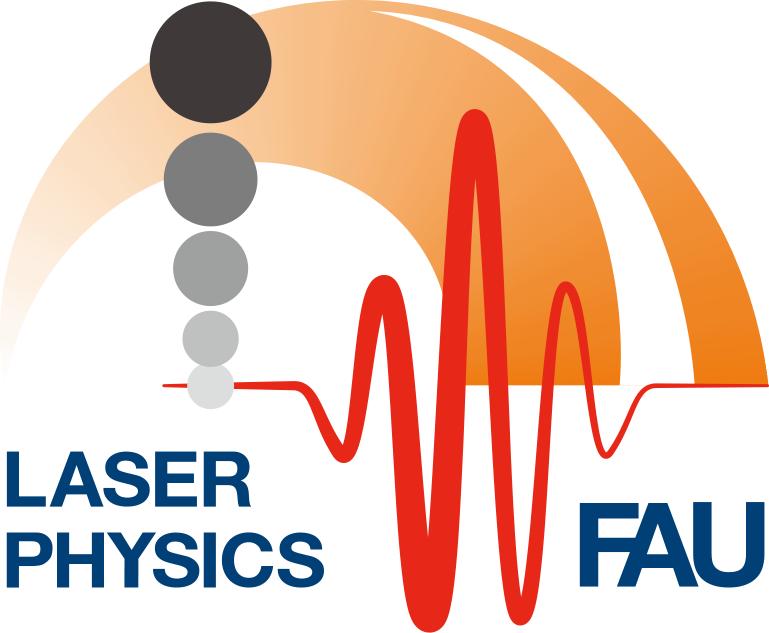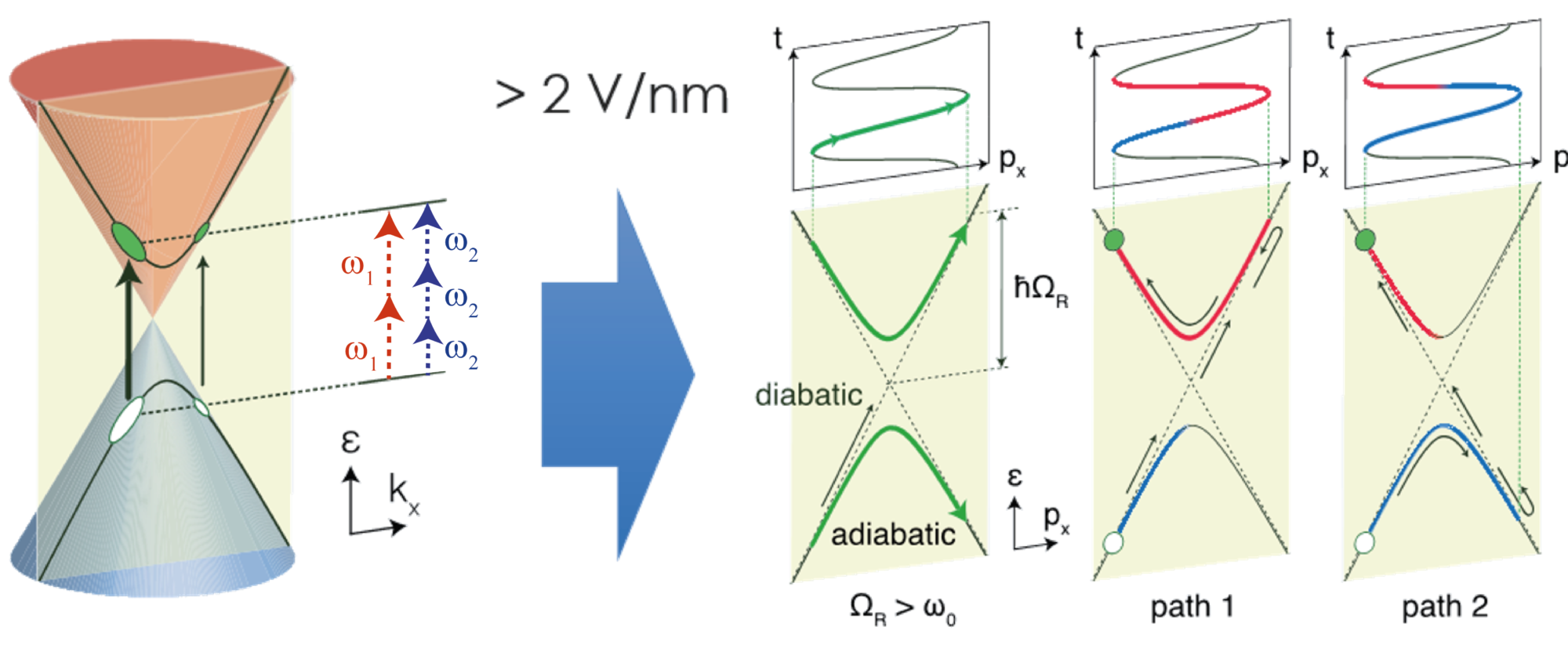Transition from photon absorption to light field-driven dynamics in graphene – paper in NJP
Recently, the coherent manipulation and control of electron trajectories in condensed matter systems with the aid of tailored electric fields has attracted particular attention. Studying this coherent response of electrons using controlled optical waveforms allows for investigating electric properties in solid state systems at optical frequencies. We have recently demonstrated that graphene, a 2-dimensional semi-metallic material with negligible optical screening effects, can withstand high laser intensities and is therefore ideally suited to extend strong-field physics to a new material class – 2D materials and conductors. In our previous work [1, 2], we have observed electron matter wave interference, called Landau-Zener-Stückelberg interference, when the system is driven with few cycler laser pulses. In the current manuscript [3], we focus on the highly interesting transition region between the perturbative light-matter interaction (photon absorption) to the light field-driven dynamics and discuss the required characteristic electric field strength to enter the strong-field regime. We compare our measurements to simulation results and find quantitative agreement, also in the transition region. Furthermore, the required comparably small field strength to enter the light-field driven regimes in these systems can be achieved with a laser oscillator, without requiring large and complex (and costly) laser amplification systems. We therefore expect that this work will make strong-field physics more widespread in the physics and materials science communities.
Our latest contribution has just been published in New Journal of Physics (Reference 3).
[1] Higuchi T., Heide C., Ullmann K., Weber HB., Hommelhoff P., Nature 550 (2017)
[2] Heide C., Higuchi T., Weber HB., Hommelhoff P., Physical Review Letters 121 (2018)
[3] Heide C., Boolakee T., Higuchi T., Weber H.B., Hommelhoff P., New Journal of Physics (2019)

